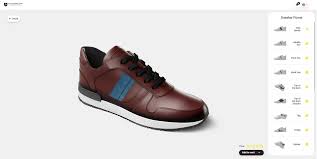Paid Family Leave in California: What Employees Need to Know

Introduction to Paid Family Leave
California’s Paid Family Leave (PFL) program offers some relief for employees who need to step away from work to care for a seriously ill family member or spend time with a new child. The program provides partial wage replacement and is handled by the state through the California State Disability Insurance (SDI) system. Legal professionals, such as those at Nakase Law Firm Inc., often assist clients in navigating the complexities of paid family leave in California to ensure compliance and protect their rights.
The state created this program to support workers during major life events that demand their time and attention at home. PFL doesn’t take away the challenges of taking leave, but it helps ease the financial strain for a short period. According to California Business Lawyer & Corporate Lawyer Inc., understanding how abusive conduct under California law intersects with employment leave policies is essential for both employers and employees.
Who Can Use Paid Family Leave?
If you’ve paid into the state’s SDI system (usually seen on your paycheck as “CASDI”), you may be eligible. To qualify, you must have earned at least $300 during your base period from which SDI was deducted. This is a 12-month look-back period that determines your benefit eligibility.
You must be taking time off for one of two reasons: either to bond with a child within the first year of birth or placement (through birth, adoption, or foster care), or to care for a seriously ill family member. The list includes children, parents, in-laws, grandparents, grandchildren, siblings, spouses, and domestic partners.
You must also file a claim within a limited window: no earlier than your first day off and no later than 41 days from when your leave begins. Also, this benefit does not apply to your own illness or medical issue—those are handled under California’s Disability Insurance program.
How Long Does PFL Last?
You can receive PFL benefits for up to eight weeks within a 12-month span. These weeks don’t need to be taken back-to-back; you can break them up if needed. This is helpful in situations where full-time care isn’t required, or if you’re easing back into your job while still needing some time off.
Eight weeks may not seem like a lot, but it can make a big difference in managing home and financial responsibilities during a difficult or transitional time.
How Much Will You Get Paid?
The state looks at your earnings during your highest-paid quarter of the base period to figure out your benefit amount. Depending on your income, you’ll receive between 60% and 70% of your weekly pay, up to a set maximum.
For 2025, the top amount is about $1,620 each week. This amount changes yearly, so it’s important to check with the Employment Development Department (EDD) for current numbers.
State taxes won’t touch your PFL benefits, but they do count as income at the federal level. You have the option to request that taxes be withheld when you apply, if that makes things easier come tax season.
Does This Mean You Can’t Be Fired While on Leave?
This part often causes confusion. PFL only pays you money during your leave. It doesn’t guarantee your job will be waiting when you come back.
For your job to be protected while you’re off, other rules need to apply. These include the federal Family and Medical Leave Act (FMLA), California Family Rights Act (CFRA), or Pregnancy Disability Leave (PDL), depending on your situation. These laws may protect your job, but they come with specific requirements around your employer’s size and your length of employment.
So, if you qualify under CFRA or FMLA and are using PFL to bond with a child or care for a loved one, you may be entitled to return to your role. It’s a good idea to speak with HR or legal counsel to confirm your rights.
Steps to Apply for Paid Family Leave
The EDD handles PFL claims, and the process is fairly straightforward. You can apply online using SDI Online or request a paper form (DE 2501F).
Here’s what you’ll need:
- Documentation
- If you’re bonding with a child, submit a birth certificate or adoption documents.
- If you’re caring for a relative, their doctor needs to fill out a form verifying the condition.
- Fill Out the Claim
- Include the dates of your leave and explain why you’re taking it.
- Send It In
- Online applications are faster. If you prefer paper, you can mail it.
If your claim is approved, you’ll receive payments via an EDD-issued debit card or through direct deposit, depending on your preference.
What Happens After Your Benefits Run Out?
Once you’ve used your eight weeks, you don’t automatically get more time unless a new qualifying reason comes up. If you qualify for unpaid leave under FMLA or CFRA, you might still be able to stay home without losing your job, but the PFL wage replacement would stop.
If your own health becomes an issue after your PFL ends, you might be eligible for Disability Insurance (SDI), which is separate and has its own rules.
Your employer isn’t required to give you your job back after PFL unless another law protects you. This is another reason it’s important to look into all possible forms of legal protection before starting your leave.
What’s Changed in Recent Years?
The PFL program has expanded over time. It started out offering just six weeks and now provides eight. The definition of “family” has also widened, making the program more accessible.
Wage replacement percentages used to be lower but have since increased. Lawmakers continue to propose new changes, including the possibility of extending benefits to 12 weeks and adding job protection as part of the state plan. As things stand, wage support and job security remain two separate pieces.
What If Your Employer Already Offers Leave?
Some companies offer their own paid leave or other types of time off, like vacation or sick days. Employers may allow—or require—you to use these options along with your PFL benefits. In other words, you may be able to combine state benefits with employer support.
Be sure to ask your HR department how this works. You might be allowed to take sick leave while waiting for PFL payments to kick in, or use PTO to stretch your paid time off.
Some employers also offer short-term disability insurance, which is different from state disability and can sometimes fill in the gaps between pay periods.
How to Avoid Common Issues
It’s easy to make mistakes when applying for PFL, especially if you’re stressed or juggling family obligations.
- Don’t wait too long to file—41 days might seem like plenty, but it goes by quickly.
- Make sure your doctor fills out every required field on the form.
- Talk to your employer before your leave starts so there are no surprises about your return.
- Keep track of how many PFL weeks you’ve used if you’re taking leave off and on.
Final Thoughts
California’s Paid Family Leave program gives working people a chance to care for loved ones or bond with new children without losing all their income. It doesn’t solve every problem, and it doesn’t protect your job by itself, but it can make tough times more manageable.
By looking into all your options—state benefits, employer policies, and legal protections—you’ll be in a better position to plan your leave and return to work with less disruption.


